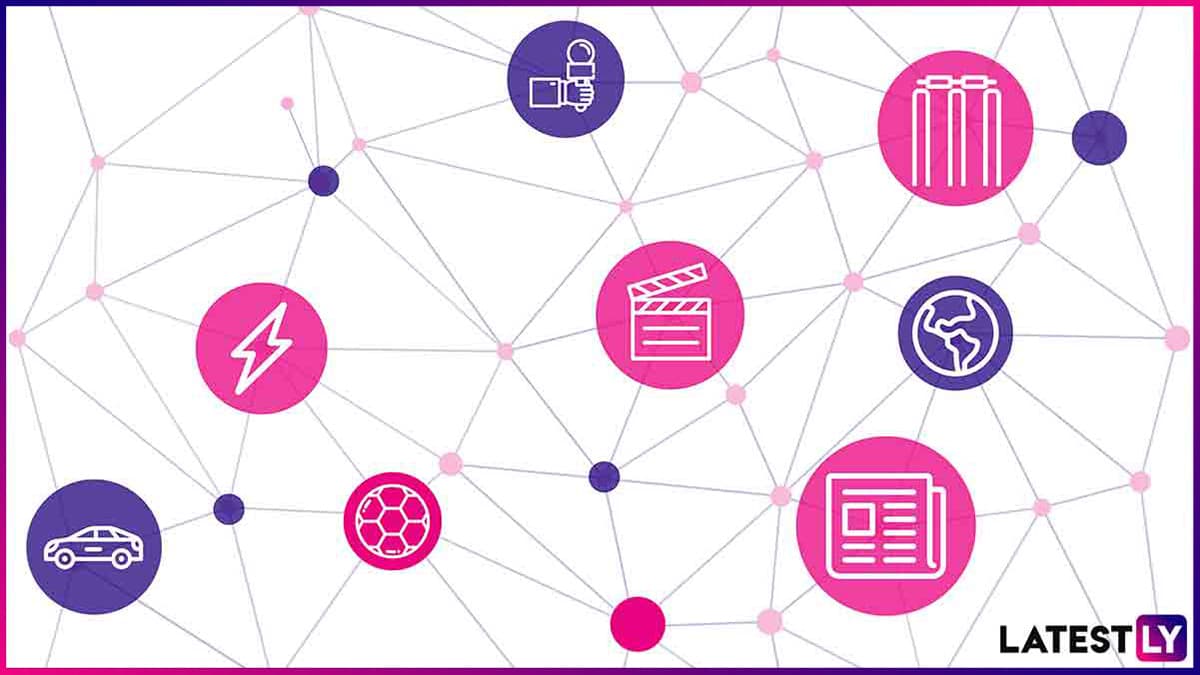Technology
Filipinos Take Stock of Progress towards Eliminating Lead Paint, Support Call to End Lead Exposure
Quezon City. Representatives from the government, industry, civil society, academe and the youth gathered at the Department of Environment and Natural Resources (DENR) on October 21 for a lively forum held in conjunction with the International Lead Poisoning Prevention Week (ILPPW) around the theme “No Safe Level: Act Now to End Lead Exposure.”
The forum — organized by the Environmental Management Bureau (EMB) in collaboration with the EcoWaste Coalition and in cooperation with the other partners of the Global Alliance to Eliminate Lead Paint — sought to shed light on the various sources of lead exposure, their impacts on the health of susceptible populations, particularly the children, and ways to prevent poisoning, as well as to celebrate the progress of eliminating lead paint in the country and the prevailing challenges and ways forward.
Engr. Maria Dorica Naz-Hipe, EMB Assistant Director and Engr. Marcelino Rivera, Jr., EMB Environmental Quality Management Division Chief, opened and closed the timely forum with the latter affirming “together, we can make lead poisoning a problem of the past.”
Environmental health expert Dr. Geminn Louis Apostol shed light on the hidden dangers of lead exposure—tracing its history, current uses, and the many ways it continues to infiltrate both workplaces and communities. He explained how lead enters the environment and the human body, its lasting effects on health, and the importance of early detection and prevention. “The best way to deal with lead is to avoid exposure in the first place,” Dr. Apostol emphasized, underscoring the need for proactive measures over reactive treatment.
While lead is toxic to everyone, Dr. Apostol highlighted that children are especially vulnerable—absorbing more lead relative to their body weight, engaging in frequent hand-to-mouth activities, and even being exposed during pregnancy if their mothers have accumulated lead in their bodies. Everyday behaviors, environments, and even toys can become pathways of exposure, making prevention a community-wide responsibility. Dr. Apostol leads the Environmental Health and Global Health Security Flagship Program at the Ateneo School of Medicine and Public Health – Center for Research and Innovation, where he champions research and advocacy to eliminate environmental health hazards and protect vulnerable populations.
Engr. Joel Maleon, EMB Senior Environmental Management Specialist, discussed the groundbreaking DENR A.O. 2013-24 or the Chemical Control Order (CCO), which among other salient provisions, established a 90 parts per million (ppm) total lead content limit for all paints and provided for a phase-out period for lead use in architectural, decorative and household paints (2013 to 2016) and industrial paints (2013 to 2019). The CCO received in 2021 the prestigious Future Policy Award (special category on lead paint), which, as Maleon pointed out, is an achievement not only for the DENR-EMB but for the entire Filipino nation.
Reginald Yu, President of the Philippine Paint & Coatings Association, Inc. (PPCAI), walked the participants through the process of replacing lead with non-lead alternatives that ensures product performance, while assuring the safety of human health and the environment, including the challenges and steps in transitioning to lead-safe paint formulations. Together with Yu at the forum were representatives of five of the seven companies that have applied and obtained third-party Lead Safe Paint® certification from SCS Global Services, including Asian Coatings Philippines, Inc.; Pacific Paint (Boysen) Philippines, Inc.; Treasure Island Industrial Corp.; Triton Paints – Roosevelt Chemical Inc.; and Sycwin Coating & Wires, Inc. A-Plus Paints-FH Colors and Coatings Corp. and Davies Paints Philippines, Inc. were unable to attend.
From the civil society, Manny Calonzo, Campaigner, EcoWaste Coalition shared some indicators of progress in eradicating lead-containing paints in the Philippines, including the integration of the lead paint ban in mandatory lead safe paint procurement policies adopted by some national government agencies and local government units; the decrease in the number of analyzed locally-manufactured paints with lead content above 90 ppm; and the expansion of independently certified lead safe paint brands. He also drew attention to challenges that have to be addressed such as the lack of publicly available data on the lead content if any of newly-introduced paints in the market; the influx of imported lead-containing paints; and the legacy paint problem, especially at homes and places of learning.
Last but not least, Jeiel Guarino, IPEN Global Lead Paint Elimination Campaigner and Science Advisor, presented the case for listing lead chromates as hazardous chemicals in Annex III of the Rotterdam Convention to control the cross-border movements of lead chromates and lead paints. If listed, the Convention’s prior informed consent (PIC) procedure will apply thereby controlling the export of lead chromates for use in paint manufacturing in countries that do not agree to receive these common lead-based pigments. Guarino encouraged the government through the DENR-EMB to follow Cameroon, Morocco and Switzerland and submit a notification of final regulatory action as the Philippines has already disallowed the importation of lead chromates for use in paint manufacturing and has banned paints containing them.
The ILPPW forum brought together 60 participants (36 women, 24 men) from the DENR-EMB, the paint industry, the civil society, the academe, and students from various colleges and universities in Metro Manila and Luzon.
The DENR, PPCAI, Pacific Paint (Boysen) Philippines, Inc., IPEN and the EcoWaste Coalition are partners of the Global Alliance to Eliminate Lead Paint co-led by the United Nations Environment Programme (UNEP) and the World Health Organization (WHO).
Quezon City. Representatives from the government, industry, civil society, academe and the youth gathered at the Department of Environment and Natural Resources (DENR) on October 21 for a lively forum held in conjunction with the International Lead Poisoning Prevention Week (ILPPW) around the theme “No Safe Level: Act Now to End Lead Exposure.”
The forum — organized by the Environmental Management Bureau (EMB) in collaboration with the EcoWaste Coalition and in cooperation with the other partners of the Global Alliance to Eliminate Lead Paint — sought to shed light on the various sources of lead exposure, their impacts on the health of susceptible populations, particularly the children, and ways to prevent poisoning, as well as to celebrate the progress of eliminating lead paint in the country and the prevailing challenges and ways forward.
Engr. Maria Dorica Naz-Hipe, EMB Assistant Director and Engr. Marcelino Rivera, Jr., EMB Environmental Quality Management Division Chief, opened and closed the timely forum with the latter affirming “together, we can make lead poisoning a problem of the past.”
Environmental health expert Dr. Geminn Louis Apostol shed light on the hidden dangers of lead exposure—tracing its history, current uses, and the many ways it continues to infiltrate both workplaces and communities. He explained how lead enters the environment and the human body, its lasting effects on health, and the importance of early detection and prevention. “The best way to deal with lead is to avoid exposure in the first place,” Dr. Apostol emphasized, underscoring the need for proactive measures over reactive treatment.
While lead is toxic to everyone, Dr. Apostol highlighted that children are especially vulnerable—absorbing more lead relative to their body weight, engaging in frequent hand-to-mouth activities, and even being exposed during pregnancy if their mothers have accumulated lead in their bodies. Everyday behaviors, environments, and even toys can become pathways of exposure, making prevention a community-wide responsibility. Dr. Apostol leads the Environmental Health and Global Health Security Flagship Program at the Ateneo School of Medicine and Public Health – Center for Research and Innovation, where he champions research and advocacy to eliminate environmental health hazards and protect vulnerable populations.
Engr. Joel Maleon, EMB Senior Environmental Management Specialist, discussed the groundbreaking DENR A.O. 2013-24 or the Chemical Control Order (CCO), which among other salient provisions, established a 90 parts per million (ppm) total lead content limit for all paints and provided for a phase-out period for lead use in architectural, decorative and household paints (2013 to 2016) and industrial paints (2013 to 2019). The CCO received in 2021 the prestigious Future Policy Award (special category on lead paint), which, as Maleon pointed out, is an achievement not only for the DENR-EMB but for the entire Filipino nation.
Reginald Yu, President of the Philippine Paint & Coatings Association, Inc. (PPCAI), walked the participants through the process of replacing lead with non-lead alternatives that ensures product performance, while assuring the safety of human health and the environment, including the challenges and steps in transitioning to lead-safe paint formulations. Together with Yu at the forum were representatives of five of the seven companies that have applied and obtained third-party Lead Safe Paint® certification from SCS Global Services, including Asian Coatings Philippines, Inc.; Pacific Paint (Boysen) Philippines, Inc.; Treasure Island Industrial Corp.; Triton Paints – Roosevelt Chemical Inc.; and Sycwin Coating & Wires, Inc. A-Plus Paints-FH Colors and Coatings Corp. and Davies Paints Philippines, Inc. were unable to attend.
From the civil society, Manny Calonzo, Campaigner, EcoWaste Coalition shared some indicators of progress in eradicating lead-containing paints in the Philippines, including the integration of the lead paint ban in mandatory lead safe paint procurement policies adopted by some national government agencies and local government units; the decrease in the number of analyzed locally-manufactured paints with lead content above 90 ppm; and the expansion of independently certified lead safe paint brands. He also drew attention to challenges that have to be addressed such as the lack of publicly available data on the lead content if any of newly-introduced paints in the market; the influx of imported lead-containing paints; and the legacy paint problem, especially at homes and places of learning.
Last but not least, Jeiel Guarino, IPEN Global Lead Paint Elimination Campaigner and Science Advisor, presented the case for listing lead chromates as hazardous chemicals in Annex III of the Rotterdam Convention to control the cross-border movements of lead chromates and lead paints. If listed, the Convention’s prior informed consent (PIC) procedure will apply thereby controlling the export of lead chromates for use in paint manufacturing in countries that do not agree to receive these common lead-based pigments. Guarino encouraged the government through the DENR-EMB to follow Cameroon, Morocco and Switzerland and submit a notification of final regulatory action as the Philippines has already disallowed the importation of lead chromates for use in paint manufacturing and has banned paints containing them.
The ILPPW forum brought together 60 participants (36 women, 24 men) from the DENR-EMB, the paint industry, the civil society, the academe, and students from various colleges and universities in Metro Manila and Luzon.
The DENR, PPCAI, Pacific Paint (Boysen) Philippines, Inc., IPEN and the EcoWaste Coalition are partners of the Global Alliance to Eliminate Lead Paint co-led by the United Nations Environment Programme (UNEP) and the World Health Organization (WHO).




